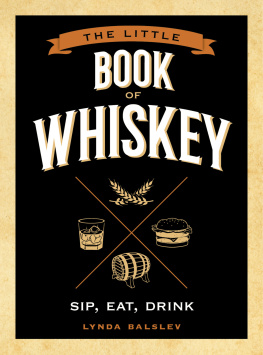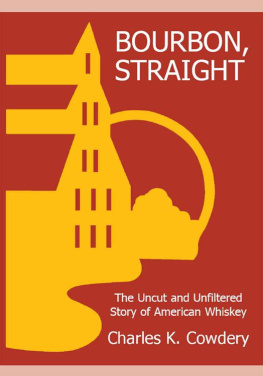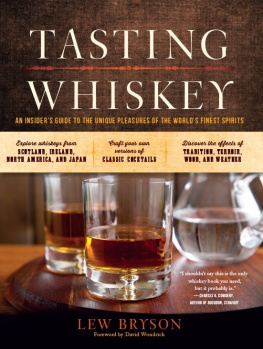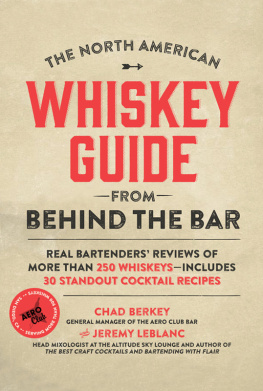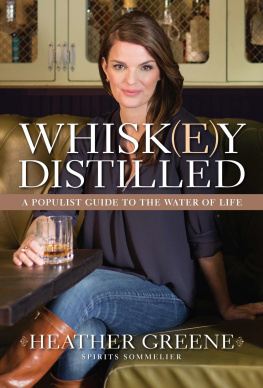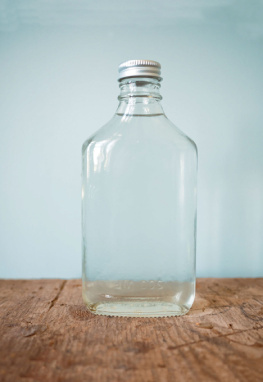How To Make Whiskey
A 7-step guide to making your own unique bourbons, ryes, and malts
This book is dedicated to Joanne Haruta, my amazing partner in business and in life. Joanne's tireless efforts have made this book and our distillery possible.
Special thanks to Jacqueline Davis, my mom, who edited this book.
Always carry a flagon of whisky in case of snakebite, and furthermore, always carry a small snake.
- W. C. Fields If I cannot drink bourbon and smoke cigars in Heaven, then I shall not go.
- Mark Twain
I should never have switched from Scotch to Martinis.
- Humphrey Bogart's last words

Distilling apparatus, pots, buckets, hydrometers, and various essential items you will need to get started
.
.
.
.
.
.
.
Troubleshooting
ABOUT THE AUTHOR

Bryan Davis Building The Massive Stills At Lost Spirits Distillery
Bryan Davis has been master distiller of two controversial and celebrated distilleries. He began distilling spirits in high school when obtaining a fake identification proved more difficult than one might expect. After a short stint as an art teacher, he returned to his first lovebooze, and he has been hard at work making award-winning spirits ever since.
In his current role as Master Distiller for Lost Spirits Distillery: a boutique single malt whiskey house located in Monterey County, California, Davis has developed all of the recipes, and built (almost) all of the equipment from scratch. From hand-pounding the copper on the two-story stills at Lost Spirits, to re-coopering and charring his own casks, Davis has worked on each and every step of the whiskey-making process.
His work has been featured in Wine Enthusiast Magazine, the NY Times, Forbes, Mutineer Magazine, and countless other publications.
Besides distilling, Davis has spoken at multiple conferences about making spirits, and spent some spare time as a guest writer for Mutineer Magazine, covering topics related to the history of distilled spirits.
I love what I do, and feel fortunate to have the opportunity to drink my life's work.
-Bryan Davis
FOREWORD
In buying this book, you have begun the first step on a long journey into a magical world where ordinary things like yeast, rye, and barley transform into extraordinary things like Ardbeg Supernova, and Rittenhouse Rye. If you are anything like I am, this obsession will consume most of your free time -- a tiny price to pay for the opportunity to command the incredible sorcery that is whiskey-making.
My obsession with distillation began as a teenager. Unable to get a suitable fake identification card, I made up for what I lacked in years with a homemade still, and plenty of closet space to set up a clandestine distillery. Since then, I have yet to find a reliable book on the topic. Unfortunately, the path to making your own whiskey remains clouded by a lot of misinformation, and a few potentially dangerous pitfalls. With this book, I am confident that not only will you make whiskey in a matter of days, but you will also be equipped with the knowledge to begin fine-tuning your whiskey into something extraordinary.
This book is designed to delicately balance the basics of whiskey making in each simple-to-read, plain English section. However, in the advanced portions of each section I will go into the myriad of variables involved, and how to fine-tune them to get the results you want.
-Bryan Davis
PLEASE NOTE: DISTILLING SPIRITS IN YOUR HOME IS ILLEGAL IN MOST OF THE CIVILIZED WORLD.
This is mostly because of tax revenues, but also for a few obvious safety concerns. When you distill spirits, you are making a highly flammable liquid, and in its vapor form, it can be explosive. This book is published for entertainment purposes only, and is not intended to promote or condone any illegal activities. It is intended to be an entertaining and informative coffee table ornament unless you are a licensed distiller or you are fortunate enough to live in a place that permits home distilling.
PART 1: SAFETY
SAFETY
DO NOT SKIP THIS CHAPTER! I know you want to do it, but DON'T!
Distilling spirits is not as dangerous as you might think. With the help of this book and a little common sense, it can be done completely safely. However, there are a few precautions to keep in mind. In this section, we will cover the obvious, but often-understated flammability of alcohol, the toxicity of methanol (and how to not accidentally drink it) and the rare, but dangerous, pressure explosions. As long as you respect a few simple rules, you are nearly guaranteed to not poison your friends, or blow yourself up!
EXPLOSIONS & FLAMMABILITY
The primary danger in making your own whiskey is flammability and explosions. Both of these events are potentially fatal, and generally unpleasant. Near-death experiences can easily be avoided by applying some simple common sense.
It is important to understand that you are making a substance that is as flammable as gasoline. When the still first begins to runit can produce distillate as concentrated as 90% alcohol. When you buy a bottle of whiskey at the store, the strongest concentration you will likely encounter is 62.5 percent alcohol. Though still flammable at 62 percent, it is far more flammable at 90 percent alcohol. There is a reason you can run a car on this stuff!
When you are making your own spirits, the first part of the distillation will come off the still near 90 percent alcohol. Not only is this as flammable as gasoline, it is also in a vapor state as it passes through the still. This means that if you hold a match to the end of your still during the first distillation phase, it will EXPLODE, sending flaming alcohol everywhere, along with copper shrapnel made out of what used to be your beautiful (and expensive) still.
To avoid this most unfortunate and disfiguring outcome, you must take precaution against a few Darwinian mistakes. First, don't heat your still with a naked flame. Commercial open-flame heated stills have their condensers located 4 to 20 feet away from the flames. This prevents the liquid from being anywhere near the flames. Small home distillation units are not this big, and thus, your condenser will be too close to the flames to safely operate. An electric hot plate is a far safer option.
The second key to not blowing yourself up relates to the condenser. Since the alcohol vapor travels through the still at boiling temperatures, it needs to be cooled down into a liquid in the condenser. If you let the cooling water in your condenser overheat, the vapor will eventually pass through the cooling coil and out into the air as alcohol steam. This steam is obviously flammable/explosive. The simple solution to this problem is to check your condenser temperature often, and never leave a still unattended. If the condenser overheats, and alcohol steam comes out of the condenser, calmly stop screaming, put out your cigar, turn off the still, and extinguish any sources of ignition nearby! Once you have extinguished any sources of ignition, add fresh cold water to the condenser.
NOTE: JOKES ASIDE, DO NOT SMOKE WHILE DISTILLING. SMOKING WHILE DISTILLING IS A DARWIN AWARD WAITING TO HAPPEN!
PRESSURE EXPLOSIONS
Though very rare, pressure explosions can, theoretically, happen if a still foams and clogs the neck or condenser plumbing. Usually, the cause is overfilling your still. The way to prevent the clogging problem is to only fill the still to a maximum of two-thirds full before starting it. However, even if it does clog, this is usually not a problem, since stills have been engineered to avoid exploding since the 1500s.
Next page

